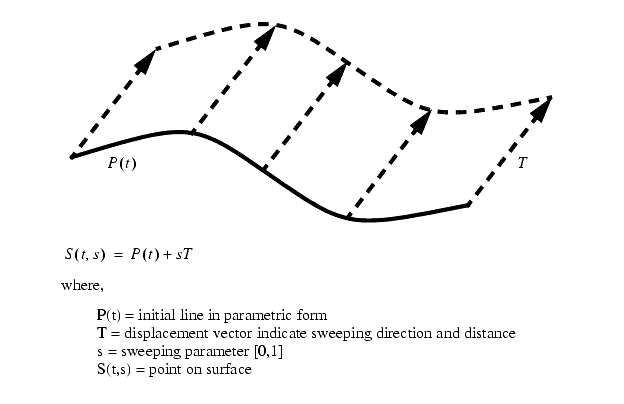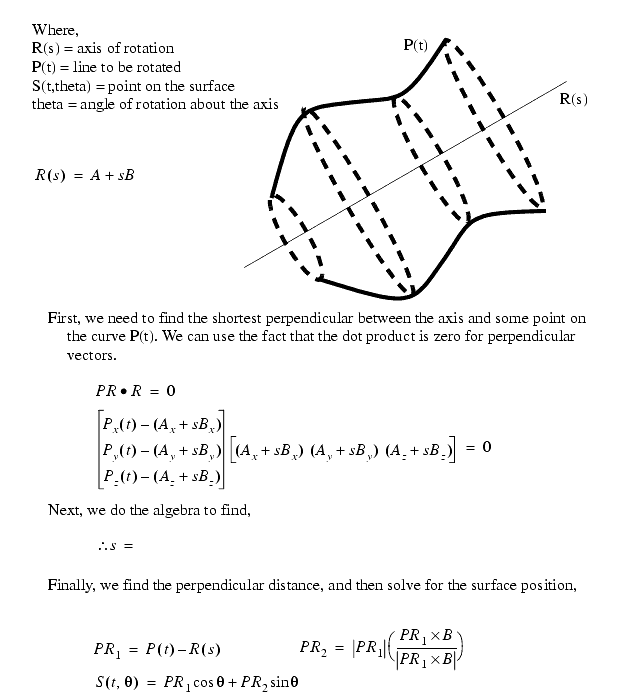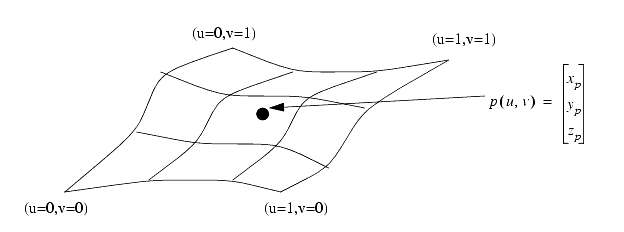6.3 SURFACE PATCHES
Surfaces are typically defined with a variety of techniques. These include,
6.3.1 Fixed Primitives
These are basic geometric shapes defined either explicitly, or parametrically. These often include,
Normal analytical geometry is used for these shapes.
6.3.2 Swept Surfaces
Basically we start with a line in space, and sweep it through space to define a surface.
A swept surface is normally represented parametrically,

The displacement vector T could also be a curved line. When the line is straight we often call the surface extruded.
6.3.3 Rotated Surfaces
This approach is much like the swept, except there is a central axis that we rotate about.
Basically to rotate a section we define an axis of rotation, and rotate the line profile.

6.3.4 Free Form Splined Surfaces
Basically, we can look at a splined surface as composed of normal spline curves.

Procedure for using splines in 3D,
3. Use the measured x,y,z-points to calculate spline parameters in the u direction for each line of points, and then in the v direction.
4. To find new z-points use (x, y) to find the appropriate patch. Convert (x, y) to (u, v). Substitute (u, v) into splines to find estimated z-value. The calculation shown below uses the blending functions.
Surface normals can be calculated using partial derivatives. (Note: these are very important for many functions, such as rendering)
